
Pharmaceutical Facility Swing Doors: Stainless Steel vs. Aluminum
- By:Lisa
- 2025-09-25
- 29
1. Why Material Choice for Swing Doors Matters in Pharma
In pharmaceutical manufacturing, cleanroom integrity starts with the walls — but it’s often the doors that make or break compliance. Cleanroom panels form the structural shell, yet it’s the swing doors — those seemingly simple passageways for personnel and materials — that directly impact GMP adherence, cross-contamination risk, and total lifecycle cost.
Today’s leading facilities face a critical choice: stainless steel profiles or aluminum profiles? The decision isn’t just about price. It involves swing direction logic, hardware durability, audit readiness, and how well the door integrates with HEPA filters, air showers, and return grilles.
Whether you’re specifying a left hand swing door for an aseptic filling suite or a double swing door for high-throughput logistics, every detail — from hinge type to surface finish — must align with airflow dynamics and contamination control.
2. Material Performance: Head-to-Head Comparison
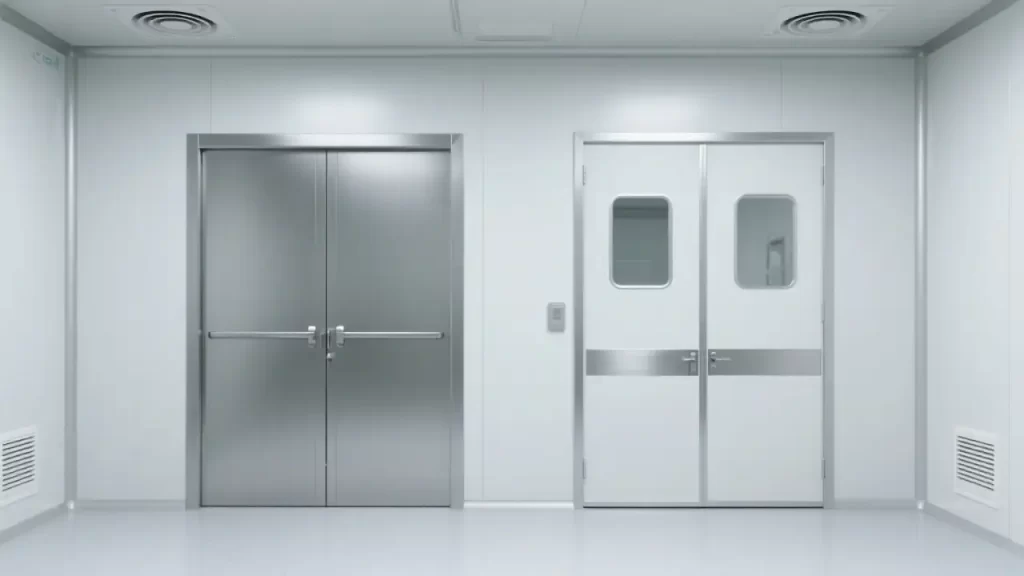
2.1 Mechanical Properties & Composition
| PARAMETER | STAINLESS 304 | STAINLESS 316 | ALUMINUM 6063-T5 |
|---|---|---|---|
| Density (g/cm³) | 7.93 | 8.00 | 2.70 |
| Tensile Strength | 515 MPa | 530 MPa | 185 MPa |
Stainless steel profiles offer superior strength and impact resistance — ideal for high-traffic zones or areas handling heavy equipment. Aluminum profiles, on the other hand, weigh just one-third as much. This dramatically reduces load on cleanroom panels, making them perfect for modular builds or retrofit projects.
Crucially, door swing direction must be locked in during design. A last-minute change can clash with equipment layout or disrupt pressure cascades — forcing costly rework.
2.2 Corrosion Resistance & Cleanability
- Stainless steel: Grade 316 resists chloride corrosion and achieves Ra ≤0.4μm after electropolishing — meeting FDA’s strictest “non-shedding, easy-clean” standards.
- Aluminum: Requires high-quality anodizing (≥15μm film thickness). Poor finishes flake over time, shedding particles that compromise downstream HEPA filter performance.
In cleanrooms, whether you choose an inward swinging door or an outward swinging door isn’t arbitrary. Grade A/B suites typically use in-swing designs to contain positive pressure. Buffer zones may deploy double action hinges for swing doors — allowing bidirectional traffic while auto-centering to maintain seal integrity.
3. Cost Breakdown: Beyond the Sticker Price
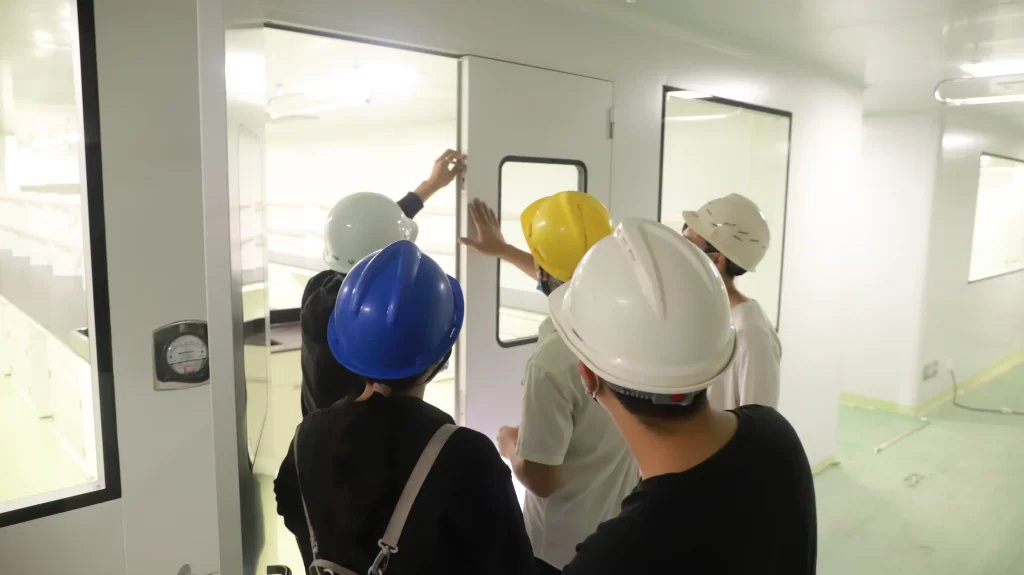
3.1 Upfront Purchase Cost (Standard Size: 900×2100mm)
| ITEM | STAINLESS 316 DOOR | ANODIZED ALUMINUM DOOR |
|---|---|---|
| Unit Price (USD) | $1,670 – $2,500 | $695 – $1,250 |
Stainless profiles cost roughly 3x more than aluminum — not just due to raw material, but also labor-intensive processes like argon welding and electropolishing. Aluminum extrusions + anodizing lend themselves to mass production, offering strong economies of scale.
Hardware matters too. Heavy-duty double swing door hinges are mandatory in high-load zones, while standard swing door hinges suffice elsewhere. Don’t underestimate this — inferior swing door latch mechanisms lead to premature seal failure.
3.2 Installation & Structural Adaptation
- Stainless doors: Weigh 100kg+, requiring reinforced framing and longer install times.
- Aluminum doors: Just 30–50kg — mount directly onto standard cleanroom panels. No structural upgrades needed.
One vaccine manufacturer saved $8,050 across 20 doors by choosing aluminum — and shaved 3 days off their schedule. Bonus: many aluminum systems allow you to change the swing of a door later — swapping swing away door hinges or repositioning frames — avoiding demolition.
3.3 Maintenance & Lifecycle Cost (LCC)
| COST FACTOR | STAINLESS (20 YRS) | ALUMINUM (15 YRS) |
|---|---|---|
| Annual Cleaning | $42 | $154 |
Aluminum doors with cheap latches wear out faster. Stainless hardware is often monolithic — fewer failure points. Over 15 years: stainless totals $2,710; aluminum hits $4,200. Bottom line? If you’ll use it >12 years, stainless wins on TCO.
4. Compliance & Audit Risks You Can’t Ignore
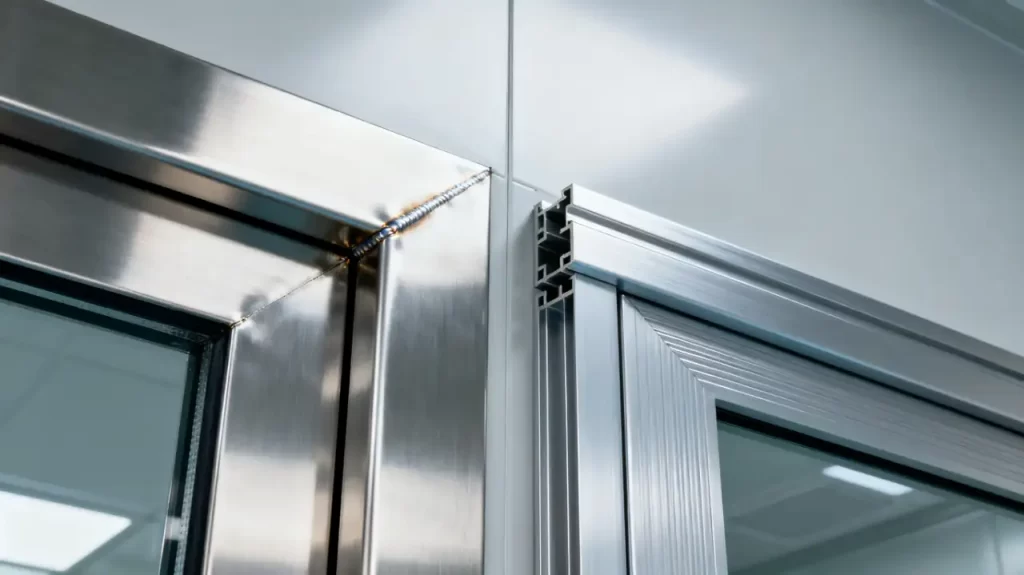
4.1 Regulatory Expectations (GMP / FDA)
- EU GMP Annex 1: “Materials shall not be a source of contamination.” Demand documentation proving your GMP materials meet cleanability specs.
- FDA 21 CFR 211.67: Surfaces must be “non-reactive, non-additive, non-absorptive.” Auditors favor seamless, uncoated metal — no paints or films.
Common findings? Flaking anodized layers → particle counts spike. Unpolished weld seams → microbial harborage. Failed seals → compromised differential pressure across air vents and return grilles.
Worst of all? Ambiguous door swing direction code on drawings. One plant received a Form 483 because field crews installed left hand swing doors where right hand reverse was specified — all due to unclear door swing annotation.
5. Application-Based Selection: Match Material to Zone

| CLEANROOM CLASS | RECOMMENDED MATERIAL | SWING CONFIGURATION & SYSTEM INTEGRATION |
|---|---|---|
| ISO 5 (Grade A/B) | Stainless 316 | Pair with automatic swing doors + interlock. Use left hand in swing door or right hand in swing door to preserve positive pressure. |
| ISO 7 (Grade C) | Anodized Aluminum | Standard swing direction. Cost-effective for non-critical zones. Compatible with cleanroom panels. |
| Logistics Buffer | Aluminum Auto-Door | Integrate with pass through + air shower. Double swing door with glass allows visual monitoring + bidirectional flow. |
| QC Lab | Non-Magnetic Al | Outward swinging door acceptable — but add security bar to meet GMP facility safety codes. |
Quick Tip: To determine door swing — stand on the push side. Hinges on the left? That’s a left hand swing door. Hinges on the right? Right hand swing door. Always include this logic in your door swing chart.
6. Supplier Selection: What to Demand (and Avoid)
6.1 Non-Negotiable Documentation
✅ Material Test Report (MTR) — proves alloy compliance
✅ Surface roughness certification — Ra ≤0.8μm
✅ Air leakage test per EN 137 or ISO 14644-4
✅ Full swing door hardware spec sheet — including closer torque, latch force, hinge load rating
6.2 Red Flags in Low-Cost Aluminum Doors
⚠️ Recycled billet aluminum → weak, warps under load → breaks seal against cleanroom panels
⚠️ Fake anodizing (5μm pretending to be 15μm) → blackens within a year → particle generator
⚠️ Single-seal gaskets → fail at >8Pa → voids HVAC profiles’ pressure cascade
Reputable suppliers provide a door swing diagram with every quote — clearly marking left vs right swing door options — and offer on-site training so your team knows how to tell the swing of a door without guesswork.
7. Final Verdict: Value Isn’t Just About Price
Choose Stainless Steel Swing Doors if:
✔️ You’re outfitting Grade A/B zones or facing strict FDA audits
✔️ You want 20+ years of zero-maintenance operation
✔️ Your swing door hardware must survive daily VHP cycles and aggressive cleaning
Choose Aluminum Swing Doors if:
✔️ You’re budget-constrained or fitting out Grade C/D areas
✔️ Speed and modularity matter — aluminum installs in half the time
✔️ You value flexibility — some systems let you reverse a door swing without replacing the frame
-
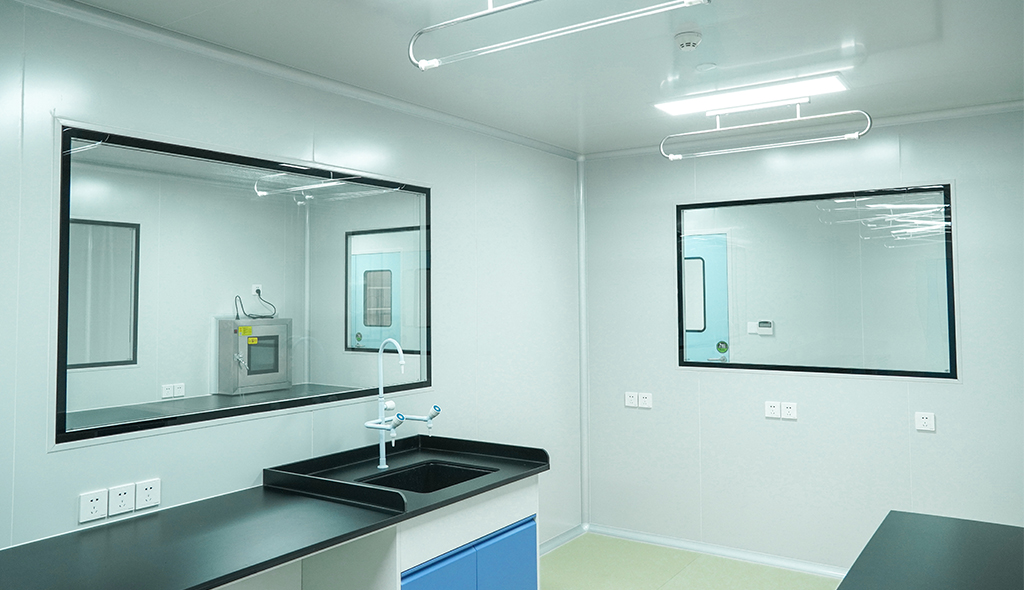 Cleanroom Glass Windows Are The Key to Maintaining a Clean Environment
Cleanroom Glass Windows Are The Key to Maintaining a Clean Environment -
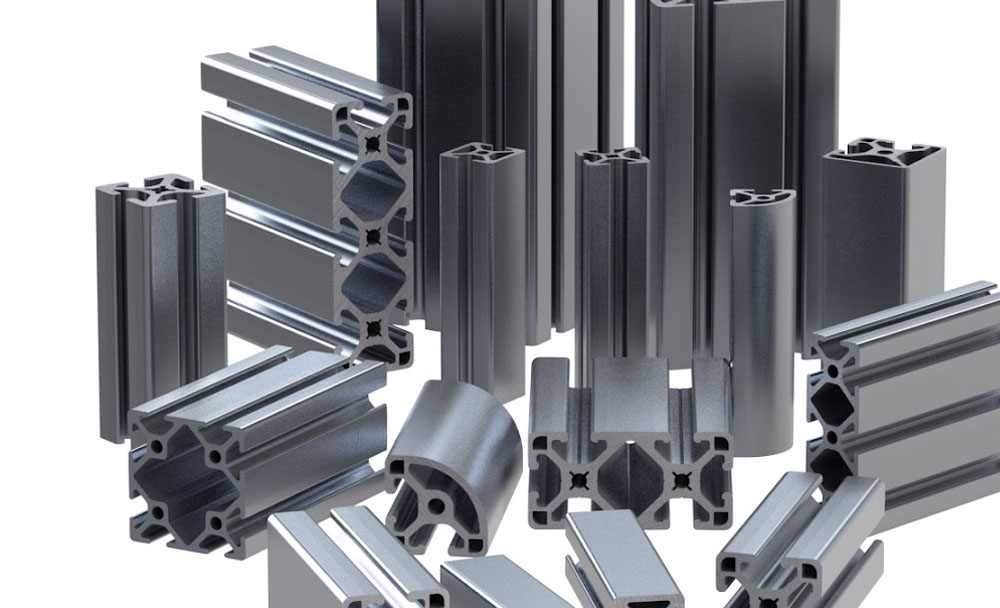 Top Aluminium Profile Manufacturers in China: Leading the Global Market
Top Aluminium Profile Manufacturers in China: Leading the Global Market -
 The Evolution of Air Tight Sliding Doors
The Evolution of Air Tight Sliding Doors -
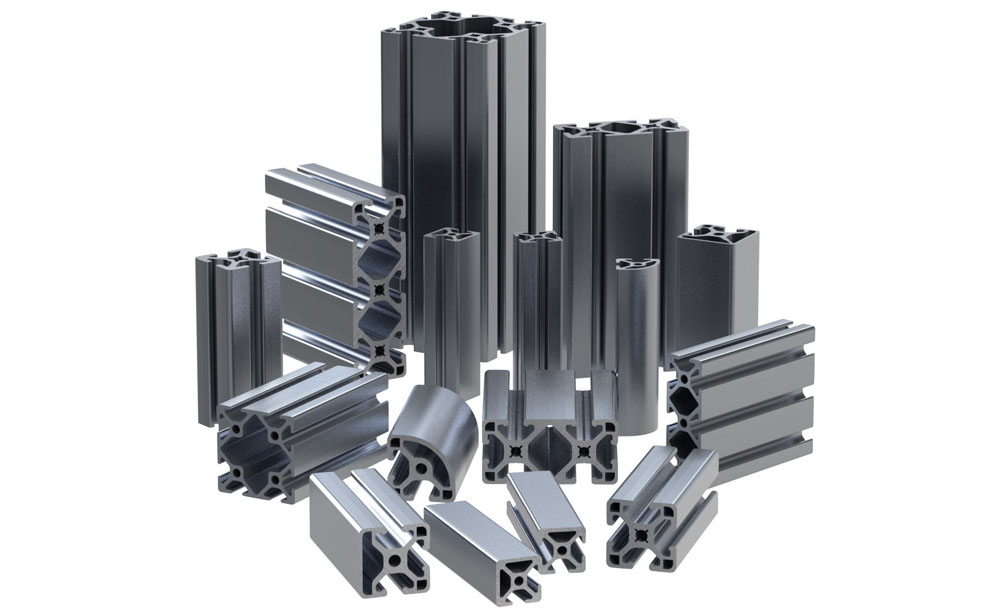 AHU Aluminium Profile: A Comprehensive Guide
AHU Aluminium Profile: A Comprehensive Guide -
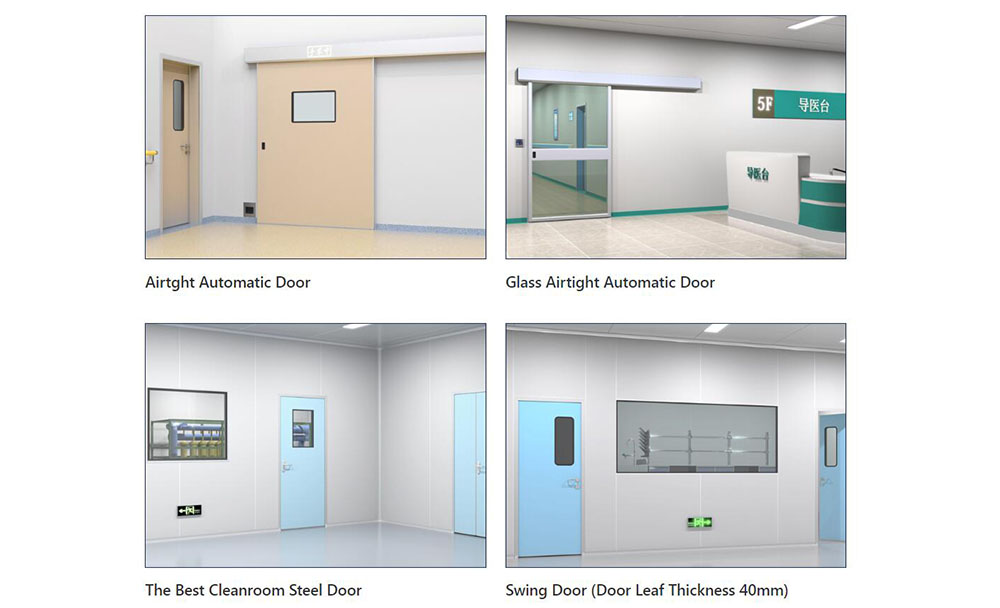 The Importance of Choosing the Right Cleanroom Door in Vietnam
The Importance of Choosing the Right Cleanroom Door in Vietnam -
 The Benefits of Hospital Automatic Doors: Enhancing Efficiency and Safety
The Benefits of Hospital Automatic Doors: Enhancing Efficiency and Safety -
.jpg) The Best Bathroom Door Manufacturers - Unlocking Endless Possibilities!
The Best Bathroom Door Manufacturers - Unlocking Endless Possibilities! -
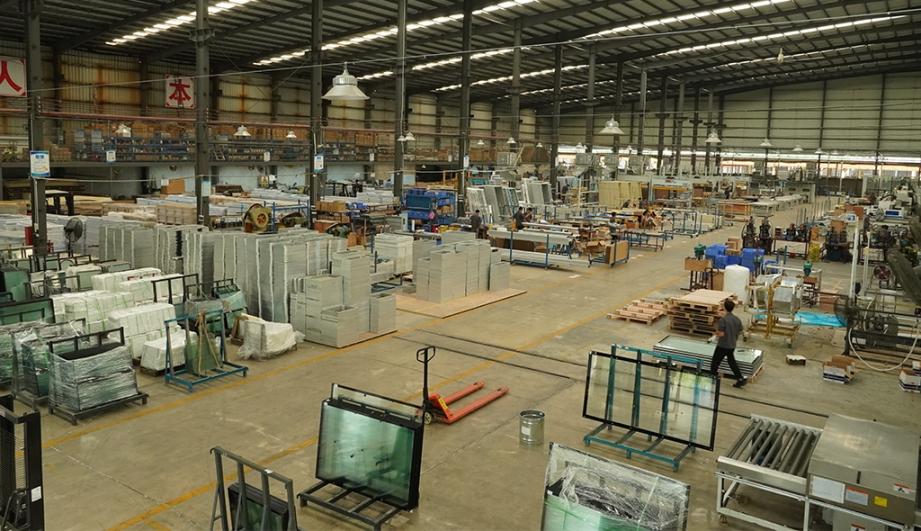 Unlock the Possibilities with AJ Manufacturing Doors
Unlock the Possibilities with AJ Manufacturing Doors -
 Make a Statement with Manufactured Home Interior Doors!
Make a Statement with Manufactured Home Interior Doors! -
 what is aluminum profile? Aluminum Profiles for Your Home is the best option
what is aluminum profile? Aluminum Profiles for Your Home is the best option
-
 How to Extend the Life of Your Exterior Steel Door
How to Extend the Life of Your Exterior Steel Door -
 What Are the Best Materials for AC Vent Covers
What Are the Best Materials for AC Vent Covers -
 Ceiling Vent Covers Labeled Fire-Rated? Here’s How to Verify
Ceiling Vent Covers Labeled Fire-Rated? Here’s How to Verify -
 Upgrading Lab Doors: When to Replace vs. When to Retrofit?
Upgrading Lab Doors: When to Replace vs. When to Retrofit? -
 Stainless Steel Door vs. Alternatives in Cleanrooms
Stainless Steel Door vs. Alternatives in Cleanrooms -
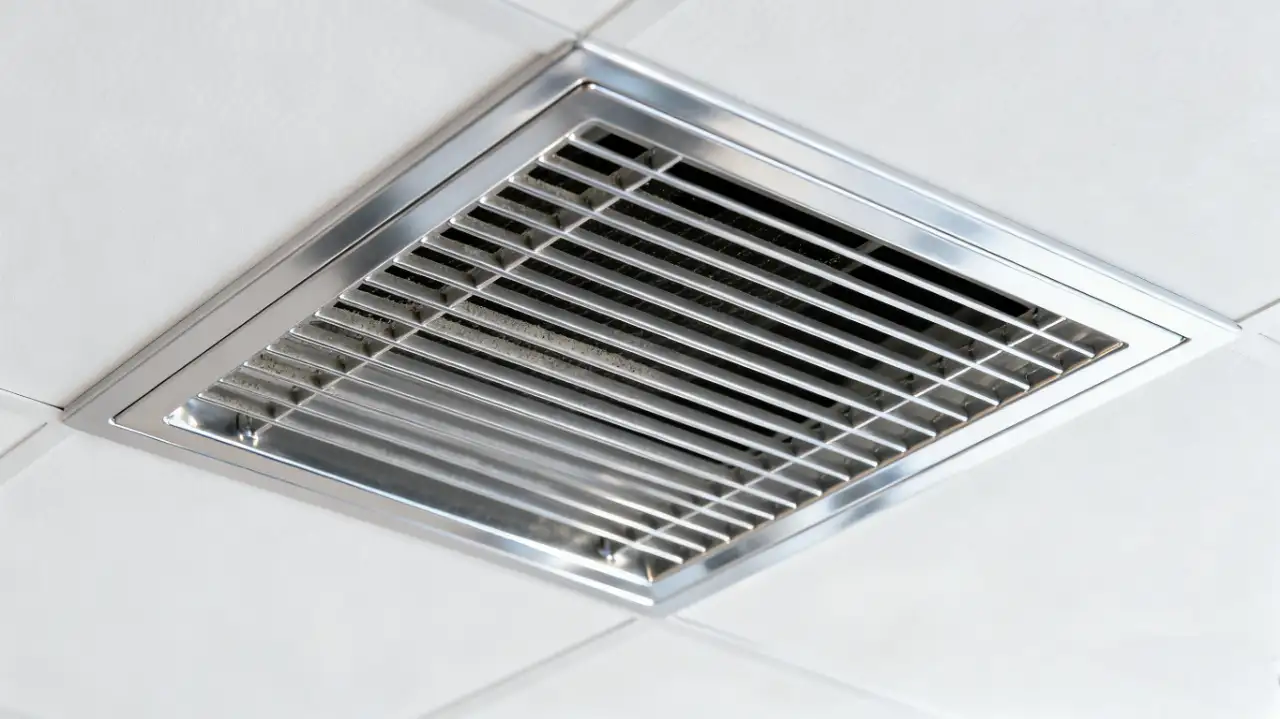 Ceiling Vent Care Tips to Boost HVAC Efficiency Year Round
Ceiling Vent Care Tips to Boost HVAC Efficiency Year Round -
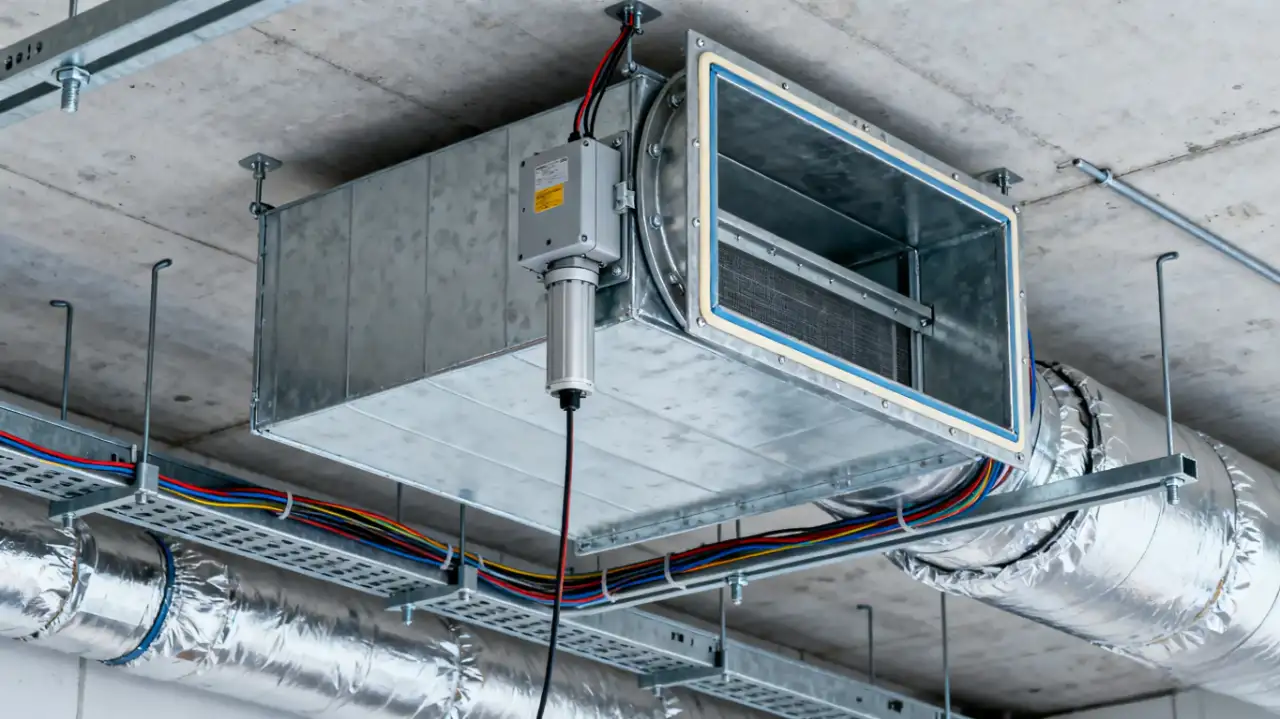 How Air Dampers Drive Efficiency in High Performance Buildings
How Air Dampers Drive Efficiency in High Performance Buildings -
 Why Semiconductor Manufacturing Can’t Function Without Cleanrooms
Why Semiconductor Manufacturing Can’t Function Without Cleanrooms -
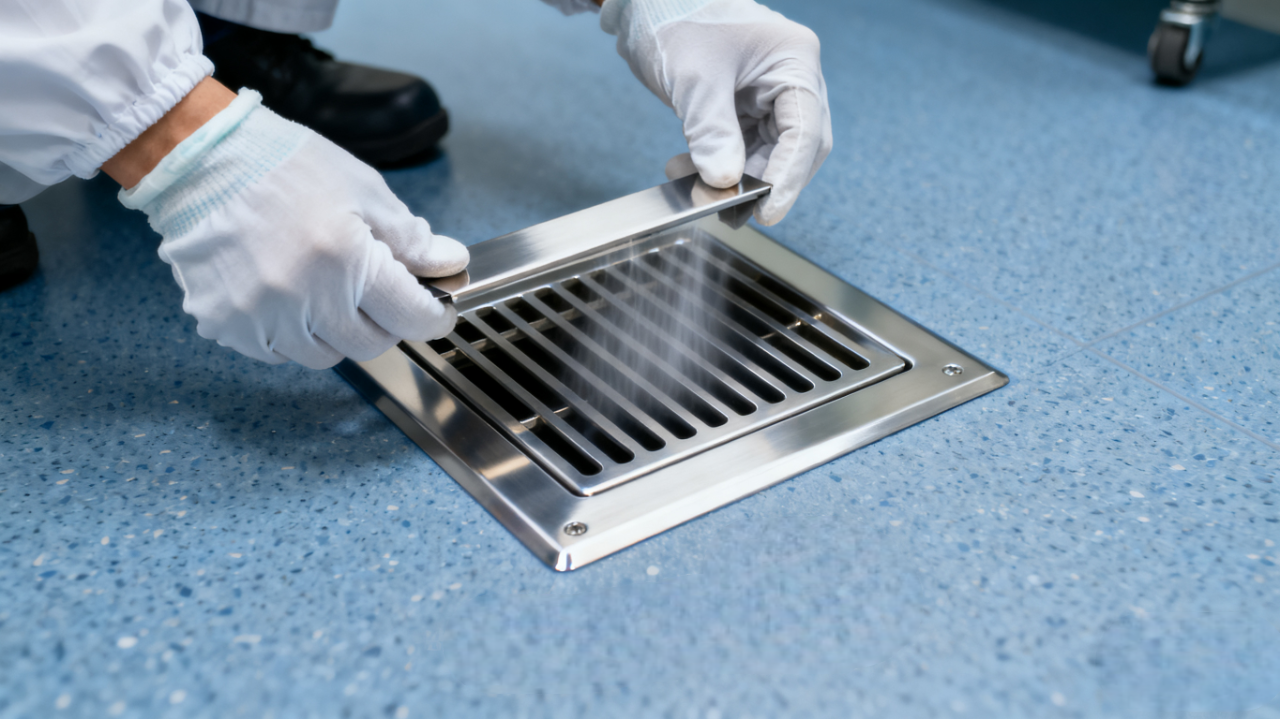 How to Select the Right Floor Vent for Cleanrooms
How to Select the Right Floor Vent for Cleanrooms -
 How to Clean and Maintain AC Registers for Peak HVAC Performance
How to Clean and Maintain AC Registers for Peak HVAC Performance

Guangzhou Yizhong Aluminum Industry Co., Ltd.
We are always providing our customers with reliable products and considerate services.
We are always providing our customers with reliable products and considerate services.


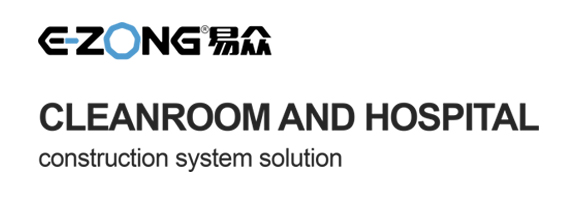
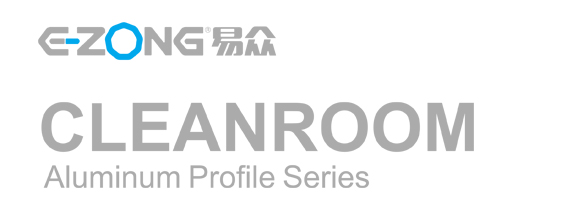
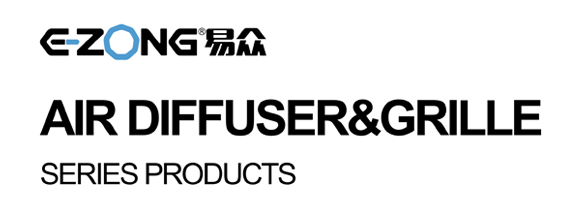





Speak Your Mind